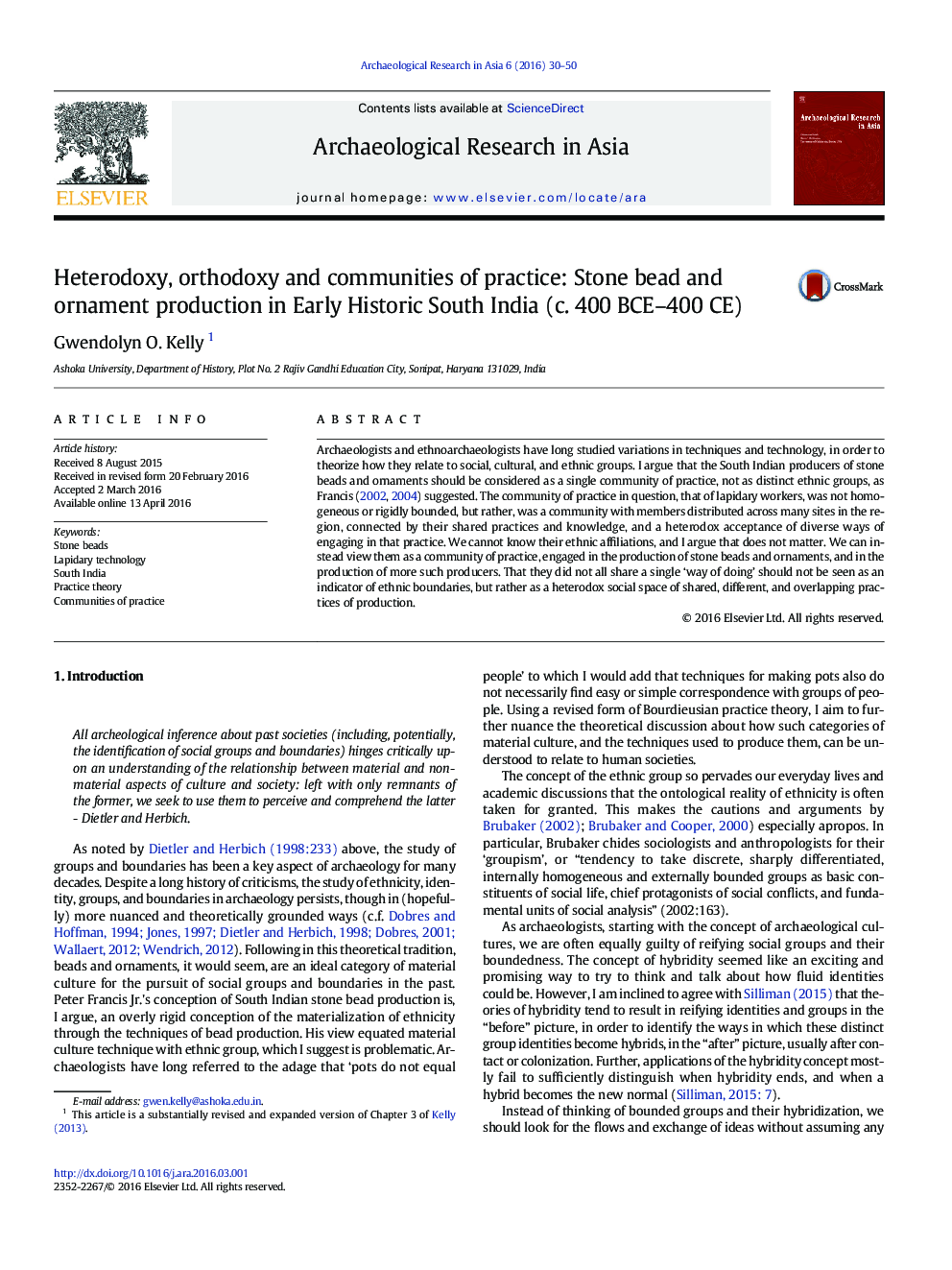| کد مقاله | کد نشریه | سال انتشار | مقاله انگلیسی | نسخه تمام متن |
|---|---|---|---|---|
| 1034144 | 1483766 | 2016 | 21 صفحه PDF | دانلود رایگان |
Archaeologists and ethnoarchaeologists have long studied variations in techniques and technology, in order to theorize how they relate to social, cultural, and ethnic groups. I argue that the South Indian producers of stone beads and ornaments should be considered as a single community of practice, not as distinct ethnic groups, as Francis (2002, 2004) suggested. The community of practice in question, that of lapidary workers, was not homogeneous or rigidly bounded, but rather, was a community with members distributed across many sites in the region, connected by their shared practices and knowledge, and a heterodox acceptance of diverse ways of engaging in that practice. We cannot know their ethnic affiliations, and I argue that does not matter. We can instead view them as a community of practice, engaged in the production of stone beads and ornaments, and in the production of more such producers. That they did not all share a single ‘way of doing’ should not be seen as an indicator of ethnic boundaries, but rather as a heterodox social space of shared, different, and overlapping practices of production.
Journal: Archaeological Research in Asia - Volume 6, June 2016, Pages 30–50
